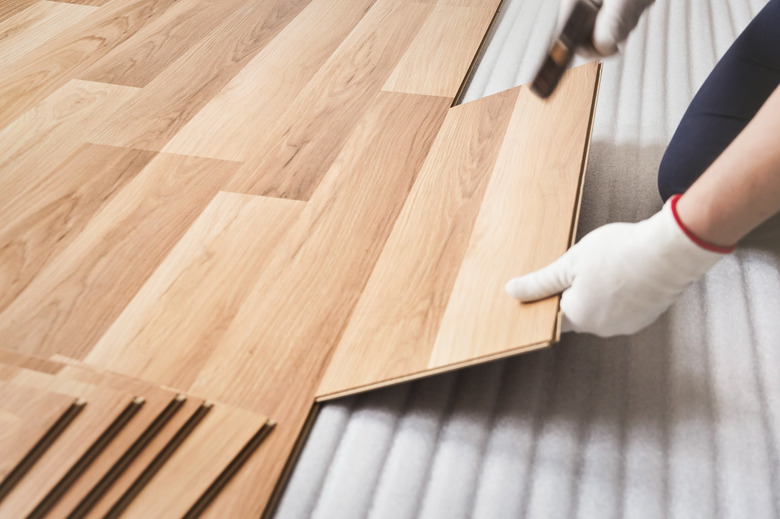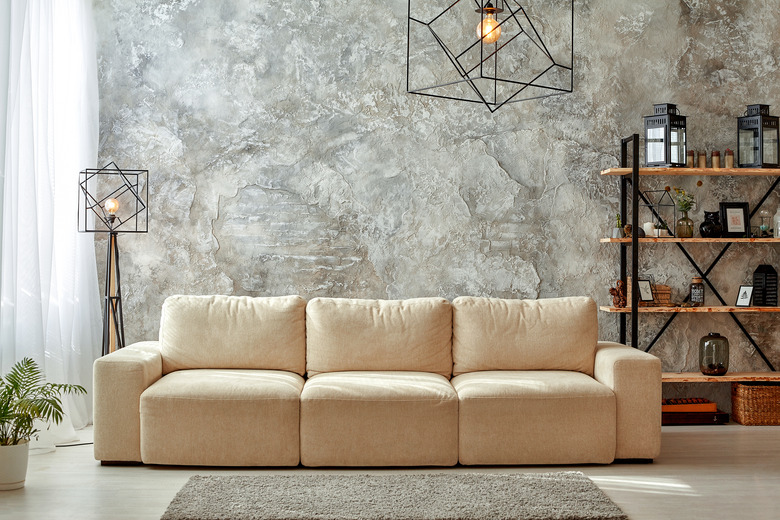How To Choose Laminate Flooring
Laminate flooring, frequently called Pergo after one of the best-selling brands, is an affordable, durable and attractive alternative to traditional tile, stone and hardwood floors. This type of flooring is incredibly popular for a number of reasons, but the two biggest benefits are the price and how easy it is to DIY. In fact, most styles can be installed by just snapping the planks together without the use of any glue or fasteners at all. Many DIYers even find that the hardest part of working with laminate flooring is choosing the right flooring option.
Types of Laminate Flooring
Types of Laminate Flooring
There are two kinds of laminate flooring: engineered wood and plastic laminate. Both come in packages of 8-millimeter or 12-millimeter planks that can be snapped together. Engineered wood contains layers of real wood that are glued together perpendicular to one another to provide additional stability. The bottom layer is a simple hardwood veneer backing, the middle layer is a hardwood core and the top layer is a thin, high-quality hardwood sealed with an acrylic finish.
While laminate flooring is sometimes frowned upon and considered "fake," it's worth recognizing that the National Wood Flooring Association considers engineered laminate to meet its definition of "real wood flooring."
Plastic laminate planks are made in layers of artificial materials with a bottom layer of melamine, a middle layer of resin-saturated fiberboard and a top layer that features a wood grain, stone or tile print on top protected by a wear layer of clear, hard plastic.
Which Option Is Best?
Which Option Is Best?
There is no definitive best option when it comes to which type of laminate flooring to use. If you value the look of real wood, you'll probably want engineered wood, but it is vastly more expensive, usually going for around twice the price of plastic laminate flooring. It is also less durable and can more easily be damaged by dents, scratches, staining and water. On the upside, wood laminate can be sanded and refinished if it is damaged, which means that it can last longer than plastic laminate in most cases.
Plastic laminate is usually a better option for high-traffic areas or those that tend to get wet, like the bathroom or kitchen. The strong top coat, moisture barrier and plastic internal components mean that it can hold up to heavy foot traffic with minimal abrasion and ensures that it is much more water resistant than wood laminate. When it comes to looks, plastic laminate may be artificial, but few people can tell the difference between the look of wood and plastic laminate. Also, if you're searching for laminate flooring that looks like tile or stone, this is the only option.
Evaluate Your Lifestyle
Evaluate Your Lifestyle
Laminate flooring can come with all number of finishes, ranging from high gloss to distressed. When you're deciding on the right finish for your home, spend some time thinking about how much abuse you put into your flooring. If you live a quiet, relaxed life, then you can feel confident picking out any finish that looks good to you. On the other hand, if you have kids, pets or lots of visitors, this heavy traffic can wear down a glossy finish in no time. In these cases, you should stick with a low-gloss, distressed or hand-scraped patina since these will continue to look good for a lot longer.
You should also review the abrasion class (AC) rating when choosing the right flooring for your home. This rating system is designed to determine how much traffic a particular laminate flooring product can take. The rating system standards are as follows:
- AC1: Suitable for moderate residential use, like guest
bedrooms - AC2: Suitable for most residential use, including living
rooms and dining rooms - AC3: Suitable for high-traffic residential areas as well as
moderate commercial use, such as hotels - AC4: Suitable for most commercial purposes, such as offices
- AC5: Suitable for high-traffic commercial areas, such as home
improvement stores and showrooms - AC6:Suitable for heavy commercial and industrial use.
Review Your Subfloor
Review Your Subfloor
Just like the finish, you need to put some thought into plank width before choosing a laminate flooring option for your home. The deciding factor in this case should be how uneven your slab or subfloor is, so you'll need to pull up at least a portion of your existing flooring before shopping. Each brand and type of flooring will have directions stating how much subfloor unevenness it can tolerate. Thicker laminate planks are harder to snap together on an uneven floor, and end joints will not stay together, leaving you with gaps between planks.
While underlayment can fix some problems in the subfloor, if yours is particularly uneven, it's best to be extra thorough when using the underlayment and choose a narrower plank just to be safe.


